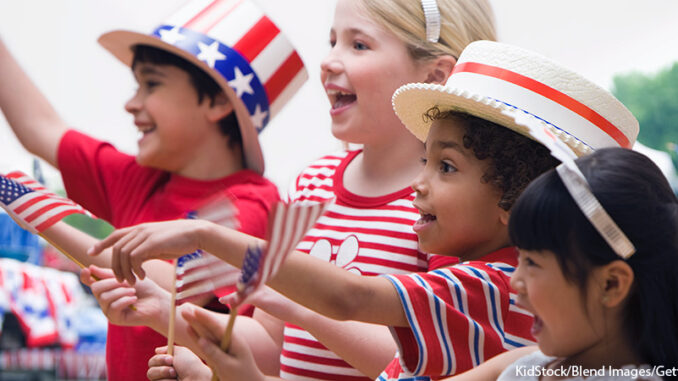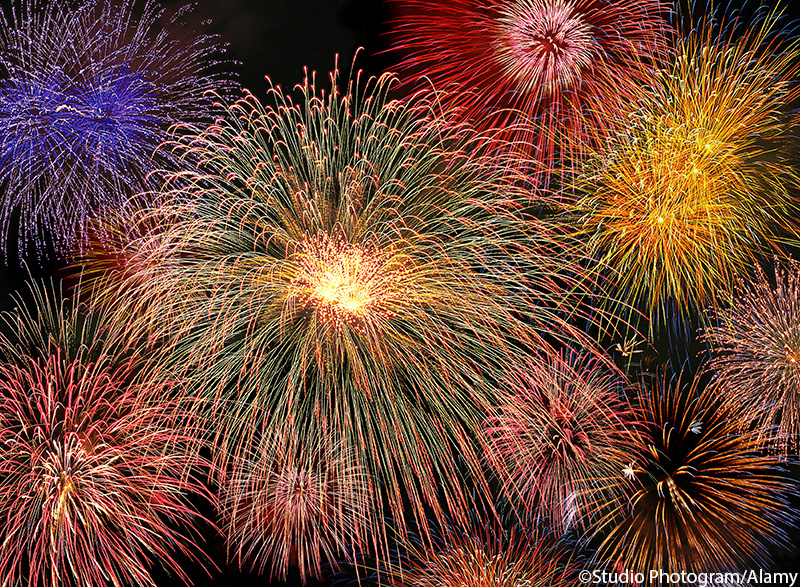

In a normal year, you might celebrate July 4th by attending a community fireworks show or participating in your town’s local parade.
Since many of us will be avoiding crowds due to coronavirus quarantine this year, you may have to celebrate at home by wearing red, white and/or blue; consuming vast amounts of cookout food in your backyard; and–if you are allowed–setting off some simple fireworks. (But PLEASE, always do this carefully and with adult supervision!)
You know the basic reason for Independence Day, but btw has some additional details that can inform the day a bit more.
Celebration of a New Nation
Settlers came to North America since the early 1600s, but they lived under British rule. The 13 colonies that were established throughout the 17th and 18th centuries were also subject to laws created in England. By the 1770s, however, colonial Americans had grown frustrated with the Parliament’s refusal to allow them proper representation in the British government. Tensions, protest and rebellion led to the creation of the First Continental Congress, a meeting made up of representative from the colonies and held in Philadelphia, Pennsylvania in 1774. It was the Second Continental Congress, held the following year, that produced the list of grievances against the English king, George III, that is known around the world as the Declaration of Independence. A five-man committee—Thomas Jefferson, Benjamin Franklin, John Adams, Roger Sherman and Robert Livingston—were selected to create the document, with Jefferson writing the first draft.
While the world has changed a lot since those early days, the ways we celebrate this holiday has some surprising similarities to the past. In a letter written to his wife Abigail on July 3, 1776, John Adams predicted that the occasion would be “celebrated, by succeeding generations, as the great anniversary festival,” and believed that it ought to be commemorated with “pomp and parade . . . games, sports, guns, bells, bonfires and illuminations (fireworks) from one end of the continent to the other from this time forward.”
Indeed, after the Declaration of Independence was read in public for the first time a few days later (on July 8th), crowds responded with gunfire and bonfires. The following year, citizens of Philadelphia celebrated the anniversary with fireworks and music, with Congress authorizing the official use of fireworks. It became a legal holiday in 1870 and a paid federal holiday in 1938.
Jefferson Survives (But Not Really)
Fifty years after the Founding Fathers put quill to parchment and created a document that would launch a revolution, two of its most prominent creators died. John Adams and Thomas Jefferson (our second and third presidents, respectively) both died on July 4, 1826. The once-allies had a political and personal falling out and did not speak to one another for eleven years before reuniting in 1812 through a series of meaningful correspondence that stretched fourteen years.
As the 50th anniversary of the signing of the Declaration of Independence approached, Jefferson and Adams were the last surviving of the Founding Fathers. On his deathbed, Adams’ last words were supposedly, “Thomas Jefferson still survives.” But he was wrong, as Jefferson had died hours earlier.
The Centennial and Bicentennial
In 1876, the first official World’s Fair was held in Philadelphia to commemorate 100 years of independence. During the formal ceremony, members of the National Woman Suffrage Association presented a “Declaration of Rights of the Women of the United States,” written by Susan B. Anthony, Elizabeth Cady Stanton and Matilda Joslyn Gage. This was a significant moment as the Civil War had, just a decade before, granted freedom to slaves, but women still had significantly less equality. One hundred years later in 1976, the country celebrated its Bicentennial with elaborate ceremonies and retrospectives.
